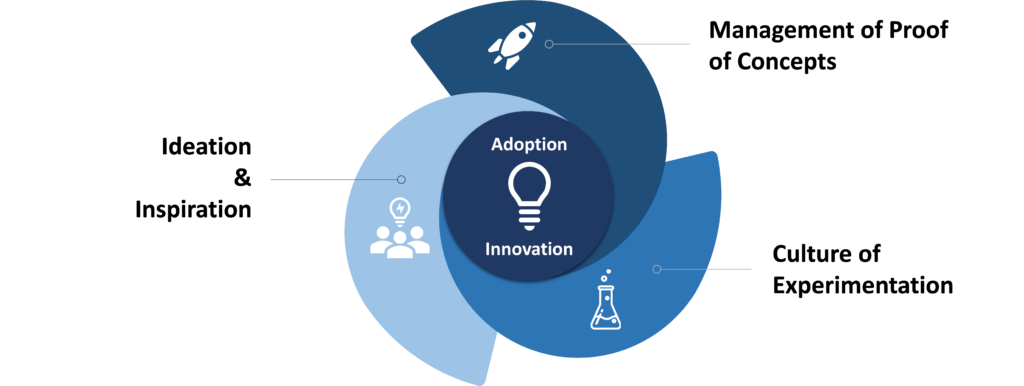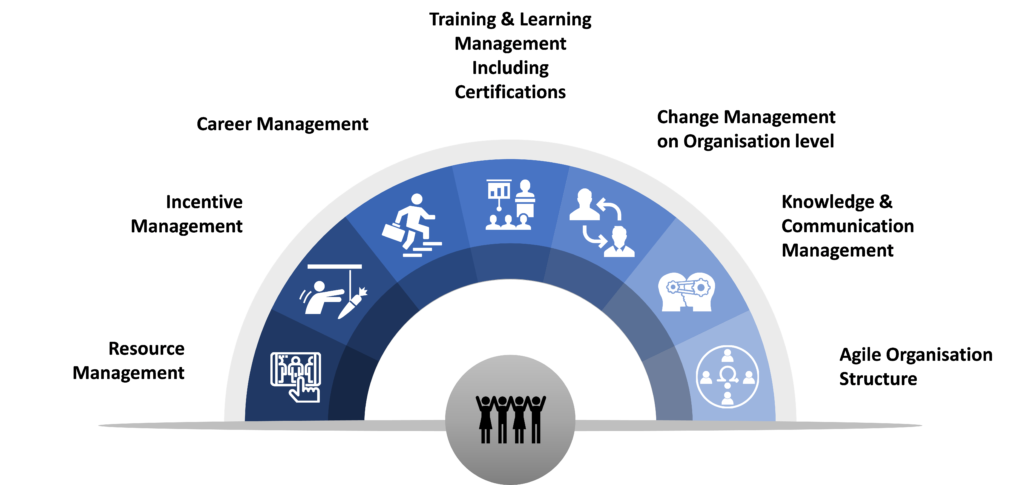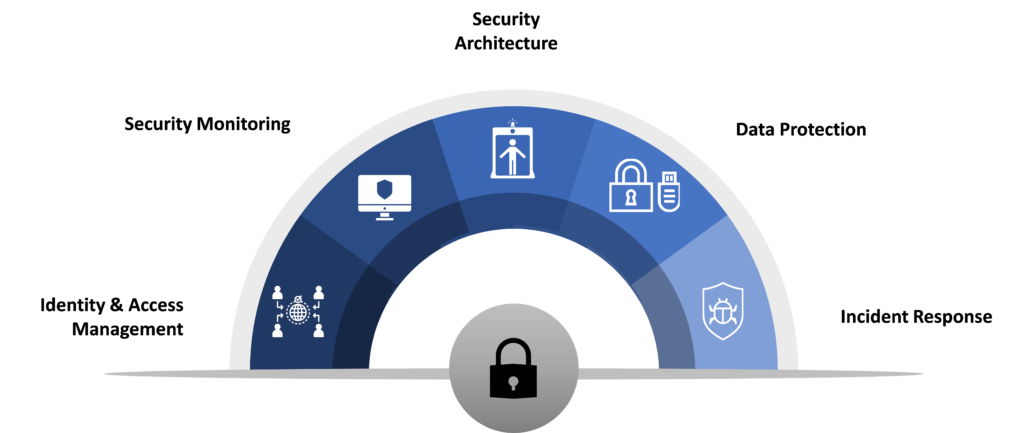Our vision
45° Cloud Center of Excellence
In the cloud first world, everything is done in self organising teams. New roles like Scrum Masters, Product Managers or Product Owners take over from traditional IT roles. Developers deploy and operate their own code in the new DevOps way. Infrastructure gets more and more blurred with developer skills. So why would we need a Foundation step in our journey, why would you need a Cloud Center of Excellence?
The answer is: “freedom within the frame” …
Imagine a world where you have 50 independent teams, all doing their own thing. Would this work? Maybe. But would it be efficient? Most likely not. One example in a Microsoft Azure world. If everybody is on their own, one team could be consuming Azure services using a credit card and a monthly payment. Another one might have a CSP contract and a third one even has an EA. It is an extreme example just to make the point. For a lot of aspects of the journey, a framework is absolutely needed. That is what a Cloud Center of Excellence approach is offering.
Approach
To build a comprehensive Cloud Center of Excellence framework we have taken the Cloud Adoption Frameworks of Amazon, Microsoft and Google as a baseline and added the business & people “flavour” to it. The 3 major cloud vendors have an obvious focus on cloud consumption. To have a successful, future proof adaptive enterprise management framework, the people and business part are at least as important.
The Foundation
The base of the Cloud Center of Excellence is an ongoing workstream of adoption & innovation. Having a future proof IT environment is rather useless if the organisation itself is rigid and not open for innovation.
The Capabilities
Further capabilities fall into 2 major categories:
- Non-technical capabilities (strategy, people and governance)
- Technical capabilities (platform, security and operations)

Adoption & Innovation
The key question is how to stay relevant in a world where innovation is happening at the speed of light. And where start-ups have access to technology that allows them to step into markets with a relatively low initial investment. An adaptive cloud enabled IT environment certainly helps, but that is not enough.

Strategy
The central theme in this capability is “Business Value Realisation”. The strategy capability is focused on ensuring that IT is aligned with business needs and that IT investments can be traced to demonstrable business results.
Engage stakeholders within the Business Perspective to create a strong business case for cloud adoption, prioritize cloud adoption initiatives, and ensure that there is a strong alignment between your organization’s business strategies and goals and IT strategies and goals.

People
The people workstream covers the staff resource capabilities and the change management required for a cloud journey. The idea is to evaluate organizational structures and roles, new skill and process requirements, and identify gaps. Performing an analysis of needs and gaps helps you to prioritize training, staffing, and organizational changes so that you can build an agile organization.
It is important to point out that getting the skilled resources onboard is only one part of the challenge. Keeping them onboard is proving to be equally challenging. This is a common topic across the different sub capabilities that needs special attention and action plans.

Governance
The governance capability focuses on processes that are needed to align the IT strategy and goals with your organization’s business strategy and goals, to ensure your organization maximizes the business value of its IT investment and minimizes the business risks.

Platform
Organizations use the the platform capability to describe the structure and design of all types of cloud architectures. The most optimal approach is to design these in an agile approach. Over a period of time (let's say 12 months), cloud capabilities change dramatically. The platform team needs to be on top of those. Through Proof of Concepts they will evaluate opportunities and see how they can be embedded in the “active architecture”.

Security
Security is a “special” capability. It is part of “the platform” and it is part of “operations”. Given the importance and complexity we do classify it as a separate main capability. The world has significantly changed in the last years. In the early days of cloud computing the cloud vendors had to convince companies that their cloud platform was as secure as the on-premise platform of these customers. This has changed in 2 steps. In step 1 customer accepted that the cloud platforms were equally safe compared to their environment. Today we are in step 2: it is virtually impossible for most companies to realize a fully secure environment without using cloud platforms.

Operations
The operations capability is about managing and scaling. This is about the focus areas that are used to enable, run, use, operate, and recover IT workloads to the level that is agreed upon with your stakeholders.

Need some help or guidance on your transformation journey?
We are happy to listen, and even more to help.

Part of the Cronos Group
Need some help or guidance on your transformation journey? We are happy to listen, and even more to help.
